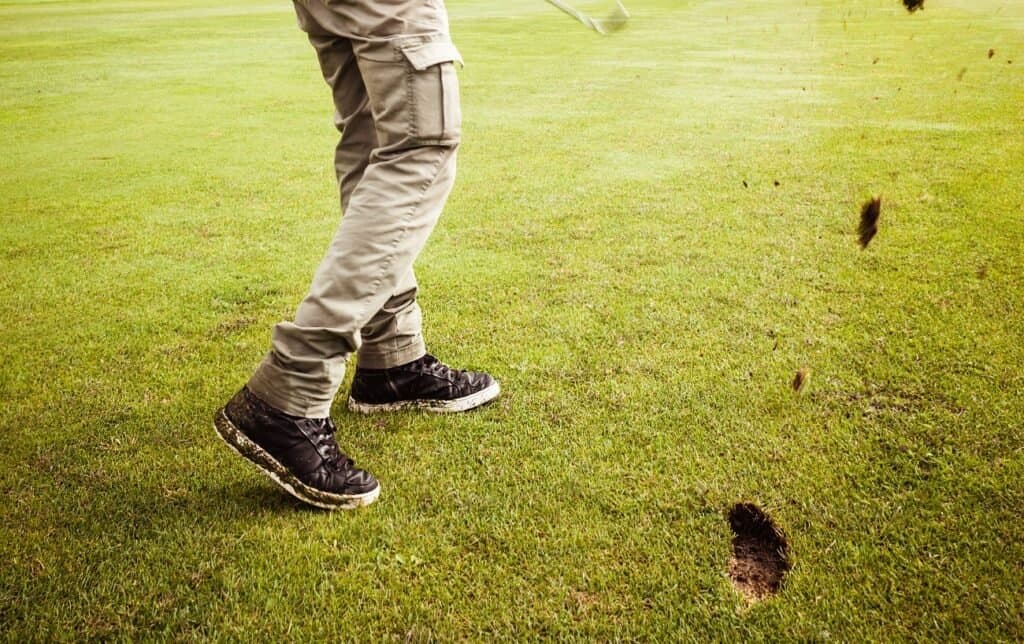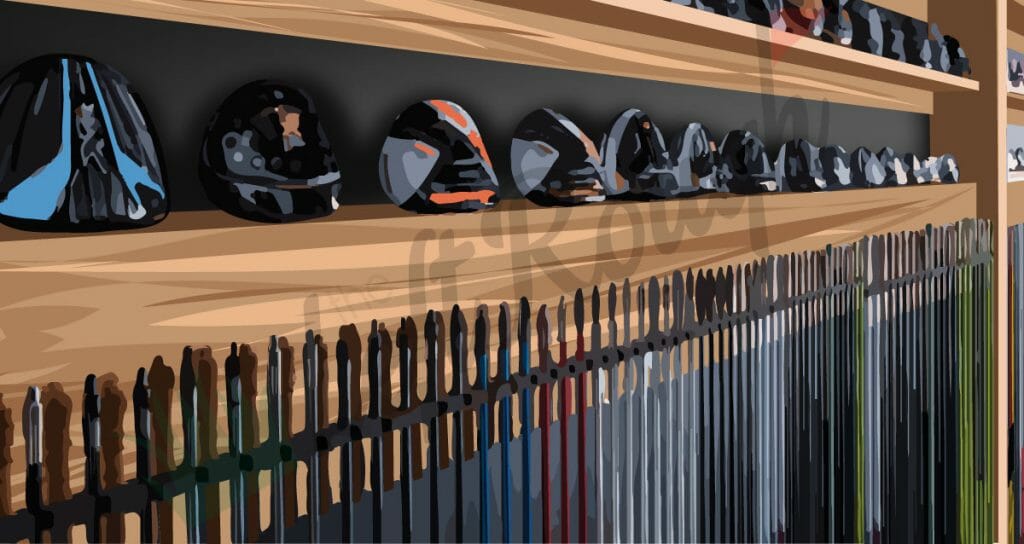
Bad golfing can be a serious sport. There are many reasons why the sport is so popular, including its appeal and difficulty. It is easy to get caught up in the excitement of hitting a ball on the green, but it is a serious sport that requires a lot of dedication and hard work.
Bogey golf
It is possible to wonder if bogey golf means bad golfing. The answer to that question depends on your perspective. A bogey occurs when a golfer makes a poor shot on a hole that is generally considered easy, but is difficult for him to get over in two. You can also make a bogey when you hit a hazard or a water hazard on your approach shot.
A bogey is acceptable golfing for most people. It's acceptable golfing for a novice player. In fact, it's actually an ideal level to strive for when trying to improve your game. A golfer with a low score should try to improve.

The term bogey is actually quite easy to understand. It dates back to the early 1900s when the standard scoring system was par. Par is the score assigned to each hole. This score is calculated by dividing its length by its difficulty. The definition of a "bogey" used to depend on the skill of the club and the player who was determining the hole's difficulty.
Duffer golf
A majority of the public course's golfers are poor or average. Their handicaps range from the 100s to the 200s. Once, a sports reporter called these golfers "duffers." While the comment did not please the golfers, it didn't mean they abandoned the sport. Instead, they adapt and continue to improve their skills.
A duffer is a golfer who plays poorly and has poor sportsmanship. The term is sometimes used to refer to weak players in general, but it is more common to use it to refer to a single golfer. The meaning of "duffer" is also more derogatory and sarcastic.
Hacker golf
The Hackers are a group made up of golfers from the Gulf South, Alabama and Georgia. Hackers write the magazine. It isn't aimed at the private club buffoons, but instead at the grass-roots golfer who doesn't mind wading through the rain with a four iron wedged up their butt. If you're into golf but like a good laugh, then you'll love this magazine.

Golfers are often known as "hackers" (or "duffers") by one another. Although both terms mean the exact same thing the first one can have some negative connotations. Although you might have been a hacker in the past, your golfing partner shouldn't make fun of you. Instead, take golf lessons and practice at the driving range to improve your game. Golfers who don't feel confident in their game can be vulnerable to being insulted by others.
A hacker's golf game will be described by three traits: they're unknowing of the fundamentals of the game, they don't take lessons, and they're generally uncompetitive. They might not be aware of the correct ways to learn golf, or they may fall for the fast fix methods, such as custom-designed teaching aids and golf clubs. These methods are not guaranteed to improve your game, and they are most often hype.
FAQ
How do I learn to play golf?
It takes practice and patience to learn how to play golf. But, you can improve your game. Here are some tips for you to improve your game.
-
Regular practice is important. Golf requires constant concentration. Golf is a skill that requires constant practice.
-
Play with people who can play. Playing with others can help you develop your own style.
-
Before you practice, learn about golf. This will help you get a sense of the things you should work on.
-
Don't try to master everything all at once. Focus on one aspect of the game. One example is to work on your putting and chipping skills. When you feel confident, you can move on to other areas of your game.
-
Take lessons. Take lessons to learn how to position yourself, swing speed, posture, and many other important aspects.
-
Try new techniques. Try out new grips, stances or swings.
-
Keep records. Keep track of your progress by recording your scores. This will help you to see the areas you need to improve.
-
Join a local golf club. There are many clubs around that offer free lessons. Many clubs offer free lessons and have helpful members who are willing to help newcomers.
-
Look for a coach. Professional coaches can provide coaching in specific areas.
What do I need to bring on a golf trip?
Consider bringing snacks and drinks. Remember to bring your favorite t-shirt, sunglasses, gloves and towels.
What is a par?
Par refers to how many strokes are required to complete a hole. The sum of all the individual scores is used to calculate the score.
In a round, there are 18 holes. Each hole is assigned a rating. "Par 3'' is the highest rated hole. It is just three strokes from your hole. The lowest rated hole is called "par 5''. It's five strokes from it.
How can I improve the game of golf?
There are many options to improve your golf game. You could join a club to improve your game. You can meet other golfers and learn new techniques by joining a club.
You can also purchase equipment like balls and clubs. These items will allow you to improve your game.
You can also study books about golf. Reading about the game will give you a deeper understanding of its rules and regulations.
What kind of clothing do I need to wear on the course
Golf is a sport that requires you to be dressed appropriately. Wear these:
-
Good shoes - The shoes that you wear on the golf course should fit your feet comfortably. They should offer stability and support.
-
Lightweight pants or shorts – Shorts should cover your knees, thighs and ankles. Trousers must be long enough for you to bend easily.
-
Long-sleeved shirt. Your shirt should be sun-protective. It should provide good ventilation.
-
Sweatpants or shorts - Pants should be loose-fitting and comfortable. They should allow you to move freely.
-
Socks - Wear socks that feel soft and comfortable.
-
Hat – Make sure you choose a hat that fits comfortably. It should cover your neck and ears.
-
Sunscreen lotion: Apply sunscreen before you go to the course.
How often should I play golf?
It depends on how much time you have available. However, most people recommend practicing two times per week.
If you're serious about improving your game, you should aim for four rounds per week.
How can a golfer score points on the course?
Points are awarded based how well a golfer performs in a competition. In golf, points can be earned in many different ways. A player may win a tournament if they score more than others. A player could finish in second place and win half of the prize money. For placing in the third through 10th places, points are also given. These extra points are known by the "strokes."
Apart from these official competitions there are many other events that award points for the best performers. Sometimes, bonus points may be awarded to players who have performed well at an event in the past.
Statistics
- In the United States, women made up 25 percent of golfers in 2021, which was up from 19 percent in 2011, and junior female golfers account for 35 percent or 1.1 million golfers.[50] (en.wikipedia.org)
- He shanked the first attempt, but it is estimated his second went more than 200 yards (180 m).[52]Golf courses worldwide. Below are the top 20 countries with the most golf courses as of 2019.[53]CountryNumber of (en.wikipedia.org)
- Professional golfers typically make between 60% and 70% of greens in regulation. (en.wikipedia.org)
- In the United States, the number of people who play golf twenty-five times or more per year decreased from 6.9 million in 2000 to 4.6 million in 2005, according to the [51] (en.wikipedia.org)
External Links
How To
How can you play better golf when the wind blows?
Golf is a game played outdoors in open spaces on well-kept grassy areas. It is one the most loved sports in the world. There are many kinds of golf courses in the world. They range from public parks and private clubs. Golf is also played indoors, such as at shopping malls and indoor arenas. Each hole has a number of holes where players have to hit the balls. Each hole has a tee box, fairway, rough, hazards (e.g., water), and green. Depending on the type shot needed, players may use a driver (wedge, wedge, long-iron, or putter). The rules may dictate that players must carry the ball at a certain distance before hitting the ball. Others may not have to do so. The conditions that a player experiences when playing outdoors golf can have an impact on how they hit their shots. These include the speed of the wind, temperature, humidity, and visibility.
There are two main types of winds: crosswinds and headwinds. Crosswinds blow right to left, while headwinds blow right to left. If the wind blows towards the golfer, he/she is playing against the wind. However, if the wind blows away from the golfer, he/she will hit with the wind. Playing golf in a strong wind is much harder because the ball tends to fly higher and further. This makes it difficult for the player to control the trajectory and direction of the ball. Players try to compensate by keeping the club's face parallel to the ground. They strike it in a way that makes it contact the ball fully and maximizes its power. The ball will fly farther in stronger winds, but it will fly lower in stronger winds.
It takes a lot practice to play golf in wind. As mentioned above, the wind affects the flight path of the ball. A good golfer should always know what kind of wind is currently affecting the area. He/She would adjust his/her swing accordingly so that he/she can hit the ball cleanly without losing any energy. It is also important to consider the direction of the wind. The wind does not travel uniformly in all directions. For example, the breeze that blows off the ocean can be very light, but it can often be stronger near the shoreline. Similarly, the wind blows strongest close to the ground. Golfers should pay close attention to wind direction and intensity because of these factors.
Golf in the wind is a constant adjustment process. Watch the wind and ensure that your swing aligns properly. Learn how to read the winds and adjust your swing accordingly.